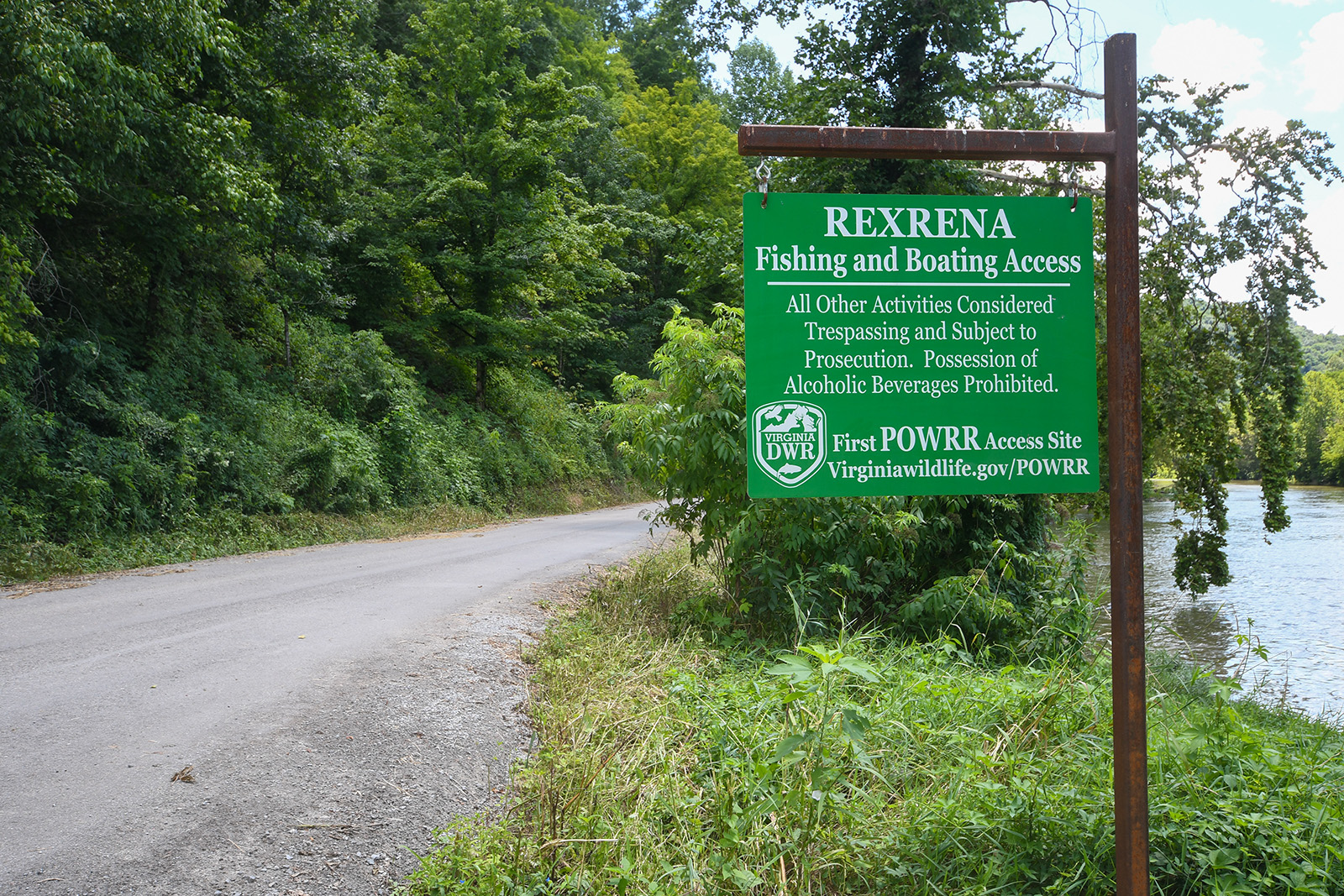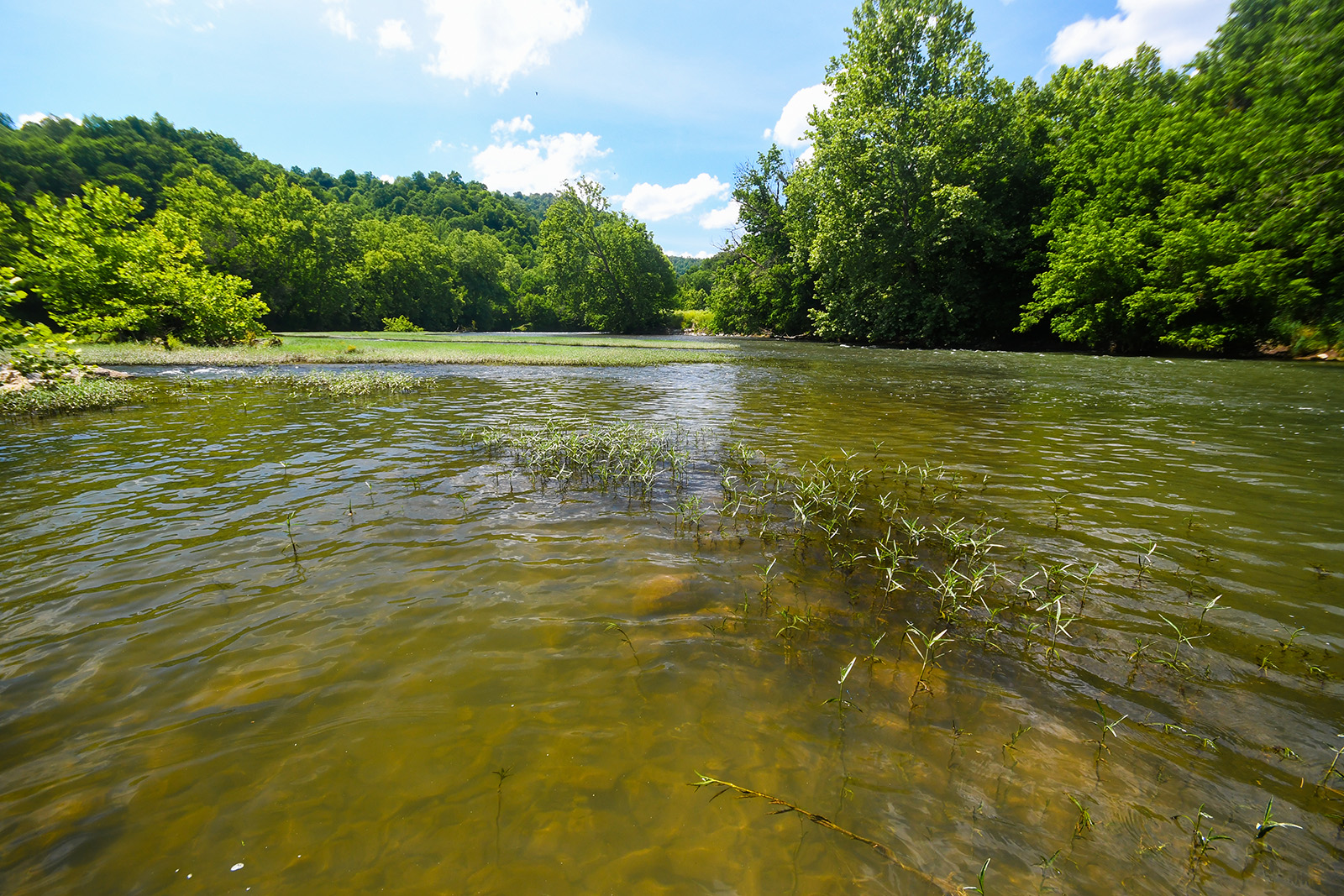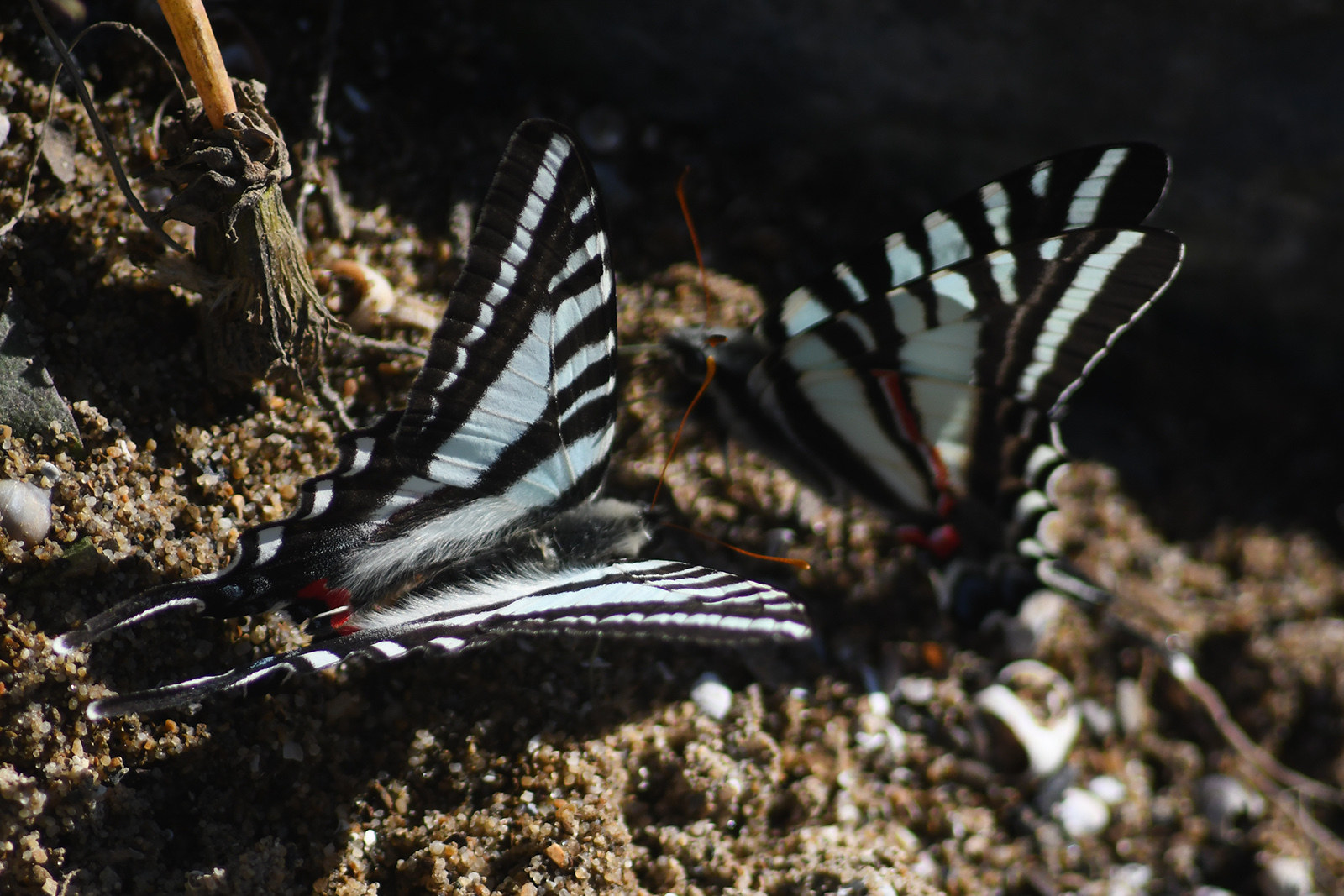By Matt Reilly
Photos by Matt Reilly
Tucked away amongst rugged mountains and pastoral landscapes, the Clinch River courses some 135 miles through a remote corner of southwest Virginia before crossing the Tennessee state line on its way to Norris Reservoir and, eventually, the Tennessee River. The Rexrena public boating access, located on the lower reaches of the river a little less than 2 miles downstream of the Clinchport boat ramp, is one of a long roster of informal access points that stud this wild and unique river. This site provides anglers and paddlers access to a relatively high-gradient section of an incredibly diverse fishery.
Located at the confluence of Copper Creek and the Clinch River near the town of Duffield, the Rexrena access is a half-acre site intended for the launching of kayaks and canoes, bank fishing, and wildlife watching. It was the first property developed under the Virginia Department of Wildlife Resources’ (VDWR) Public Opportunities for Wildlife-Related Recreation (POWRR) program and is funded by a Voluntary Public Access and Habitat Incentive Program (VPAHIP) grant. Since its acquisition and development, several other such properties, particularly in southwest Virginia, have been acquired, which provide a diversity of sporting opportunities.

The site can be accessed via Copper Creek Road (Rt. 627) off US Route 23, halfway between the towns of Gate City and Duffield. A small gravel parking lot and a maintained grassy bank allow the quick and easy hand-launching of boats.
Rexrena can be used as a takeout for a quick, 1.8-mile float originating at the Clinchport boat ramp upstream. Clinchport offers one of two developed, concrete boat ramps on the river, and can be reached via the Clinch River Highway (Rt. 65) off of US Route 23. After exiting the long Clinchport pool and passing the mouth of Stock Creek on river right, paddlers will find a relatively high-gradient river marked with riffles, ledges, and willow grass until the takeout at Rexrena.

The Clinch River is a waterway rich with opportunities for a wide variety of outdoor enthusiasts.
The last float on the Clinch River within the state of Virginia starts at Rexrena and runs 9 miles downstream to a rugged, informal access point at the Tennessee state line, located on river left, off of Rt. 627. This float can take some time to complete, as it features long stretches of flat water, pocked with a few intense ledge systems.
The Clinch River offers an incredibly diverse fishery to anglers willing to make the trek. It sports great populations of smallmouth bass, sunfish, longnose gar, walleye, and channel and flathead catfish. Freshwater drum, spotted bass, largemouth bass, and black crappie also exist in small numbers. The Clinch River is also one of the only two rivers in the Old Dominion that hold sauger.

Smallmouth fishing on the Clinch River is an exciting opportunity.
Quality smallmouth and sunfish habitat can be found on both floats that Rexrena provides access to, while the slower pools and deep ledges offer anglers opportunities at walleye and sauger.
Redhorse suckers, also called “redtails” or “redfins,” are abundant in the river, and the Clinch River within the confines of Scott County is home to the only legal sucker shooting season in the state. In the spring, those who relish the taste of these “trash fish” take to wooden platforms in the riparian zone overlooking the shoals in this section of river and blast the river with rifles, concussing the suckers that gather there and making them easy to collect. As you float toward the Tennessee state line from Rexrena, keep an eye out for these perches in the trees.
This southwest Virginian gem has more than just sporting opportunities to offer the visitor, and is a site on the Virginia Bird and Wildlife Trail. Wildlife viewing opportunities abound, particularly for those willing to don a mask and snorkel. The Clinch River is considered to be one of the most biodiverse rivers in the world, and is the vanguard hotspot for imperiled aquatic species, according to The Nature Conservancy. It’s home to more than 100 species of non-game fish and 46 species of freshwater mussels, including 19 species of fish and 29 species of mussels that are federally listed as threatened or endangered species. These species, like the tangerine darter, blotchside logperch, and purple wartyback mussel, contribute to the wild and delicate nature of this hidden river.
For the herpers, the Clinch River is one of the only rivers in the state where northern map and spiny softshell turtles can be observed. These almost entirely aquatic turtles are restricted in range by the waters they call home, and both of these species, in Virginia, are only native to the upper Tennessee River Watershed.
Those looking for terrestrial wildlife will find the usual assemblage of riparian bird species along the riverbottom in Rexrena, from great blue herons and belted kingfishers to the occasional yellow-crowned night heron. Zebra swallowtails–an elegant native butterfly featuring light blue to white and black barring with red hotspots–are particularly dense along the banks of the Clinch River in the springtime. These striking butterflies have only one host plant in the state of Virginia, one that grows densely along the mountain river valleys—the pawpaw—and the winged adults’ presence in the riparian zone is a concerted effort to lay eggs and perpetuate their species.

Zebra swallowtail butterflies spotted on the banks of the Clinch River.
For the casual and avid boater, angler, and wildlife watcher, the Rexrena boating access on the scenic Clinch River is an invaluable access point, particularly given its proximity to the Clinchport boat ramp just a short distance upstream.
Matt Reilly is a full-time freelance writer, outdoor columnist, and fly fishing guide based in southwest Virginia.


